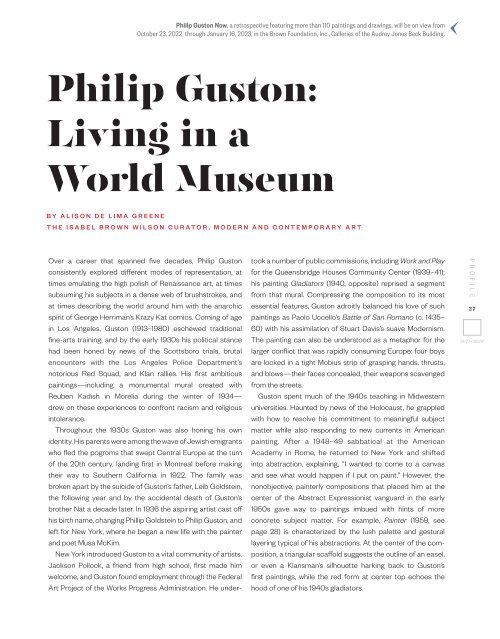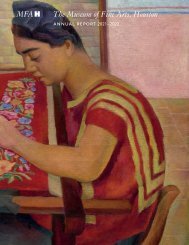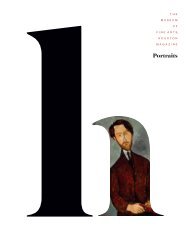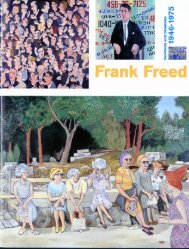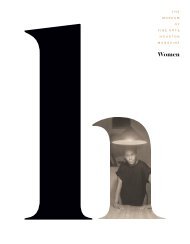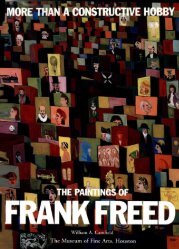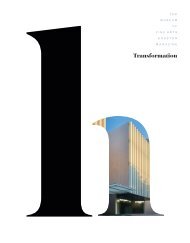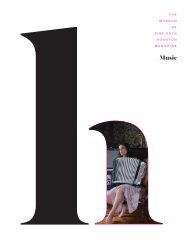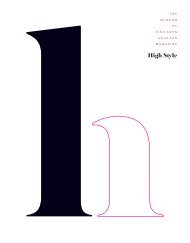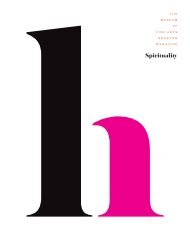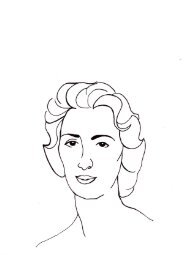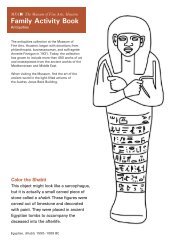Create successful ePaper yourself
Turn your PDF publications into a flip-book with our unique Google optimized e-Paper software.
Philip Guston Now, a retrospective featuring more than 110 paintings and drawings, will be on view from<br />
October 23, <strong>2022</strong>, through January 16, 2023, in the Brown Foundation, Inc., Galleries of the Audrey Jones Beck Building.<br />
Philip Guston:<br />
Living in a<br />
World Museum<br />
BY ALISON DE LIMA GREENE<br />
THE ISABEL BROWN WILSON CURATOR, MODERN AND CONTEMPORARY ART<br />
Over a career that spanned five decades, Philip Guston<br />
consistently explored different modes of representation, at<br />
times emulating the high polish of Renaissance art, at times<br />
subsuming his subjects in a dense web of brushstrokes, and<br />
at times describing the world around him with the anarchic<br />
spirit of George Herriman’s Krazy Kat comics. Coming of age<br />
in Los Angeles, Guston (1913–1980) eschewed traditional<br />
fine-arts training, and by the early 1930s his political stance<br />
had been honed by news of the Scottsboro trials, brutal<br />
encounters with the Los Angeles Police Department’s<br />
notorious Red Squad, and Klan rallies. His first ambitious<br />
paintings—including a monumental mural created with<br />
Reuben Kadish in Morelia during the winter of 1934—<br />
drew on these experiences to confront racism and religious<br />
intolerance.<br />
Throughout the 1930s Guston was also honing his own<br />
identity. His parents were among the wave of Jewish emigrants<br />
who fled the pogroms that swept Central Europe at the turn<br />
of the 20th century, landing first in Montreal before making<br />
their way to Southern California in 1922. <strong>The</strong> family was<br />
broken apart by the suicide of Guston’s father, Leib Goldstein,<br />
the following year and by the accidental death of Guston’s<br />
brother Nat a decade later. In 1936 the aspiring artist cast off<br />
his birth name, changing Phillip Goldstein to Philip Guston, and<br />
left for New York, where he began a new life with the painter<br />
and poet Musa McKim.<br />
New York introduced Guston to a vital community of artists.<br />
Jackson Pollock, a friend from high school, first made him<br />
welcome, and Guston found employment through the Federal<br />
Art Project of the Works Progress Administration. He undertook<br />
a number of public commissions, including Work and Play<br />
for the Queensbridge Houses Community Center (1939–41);<br />
his painting Gladiators (1940, opposite) reprised a segment<br />
from that mural. Compressing the composition to its most<br />
essential features, Guston adroitly balanced his love of such<br />
paintings as Paolo Uccello’s Battle of San Romano (c. 1435–<br />
60) with his assimilation of Stuart Davis’s suave Modernism.<br />
<strong>The</strong> painting can also be understood as a metaphor for the<br />
larger conflict that was rapidly consuming Europe: four boys<br />
are locked in a tight Mobius strip of grasping hands, thrusts,<br />
and blows—their faces concealed, their weapons scavenged<br />
from the streets.<br />
Guston spent much of the 1940s teaching in Midwestern<br />
universities. Haunted by news of the Holocaust, he grappled<br />
with how to resolve his commitment to meaningful subject<br />
matter while also responding to new currents in American<br />
painting. After a 1948–49 sabbatical at the American<br />
Academy in Rome, he returned to New York and shifted<br />
into abstraction, explaining, “I wanted to come to a canvas<br />
and see what would happen if I put on paint.” However, the<br />
nonobjective, painterly compositions that placed him at the<br />
center of the Abstract Expressionist vanguard in the early<br />
1950s gave way to paintings imbued with hints of more<br />
concrete subject matter. For example, Painter (1959, see<br />
page 28) is characterized by the lush palette and gestural<br />
layering typical of his abstractions. At the center of the composition,<br />
a triangular scaffold suggests the outline of an easel,<br />
or even a Klansman’s silhouette harking back to Guston’s<br />
first paintings, while the red form at center top echoes the<br />
hood of one of his 1940s gladiators.<br />
P R O F I L E<br />
27<br />
24 1/2 × 28 1/8”


